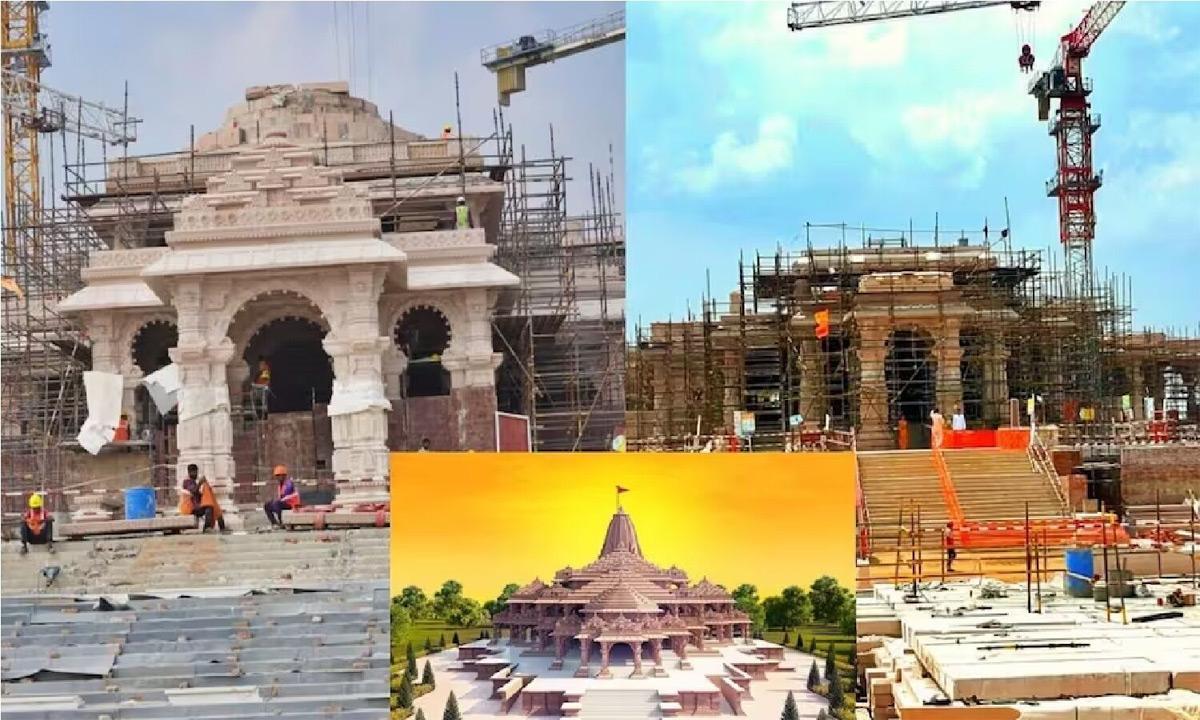Neerunjun Gopee
Africa-Press – Mauritius. It has been no surprise that, in the wake of the rebuilding of the Ram Mandir at Ayodhya, there has been a flurry of articles in both the Western and Indian media from the pens of the left-illiberal cabal that is openly anti-Hindu, anti-India and anti-Modi.
Their agenda is only too well-known and has not escaped the scrutiny of intellectuals and seasoned analysts both in the West (among others David Frawley, Jeffrey Armstrong, Maria Wirth) and in India who are equally sharp and vigilant and have countered with evidence-backed arguments the inanities that are spewed by the former.
The thoroughness of their reporting shows that the scribes of that cabal are very astute and are aware of all the facts and the evidence – e. g. the definitive verdict of the Supreme Court of India and the archaeological discoveries at the Ramjanmabhoomi site.
However, prejudiced as they are by the malicious agenda embedded in their minds, they prefer to ignore facts, distort them, add falsehoods: classic misinformation and disinformation.
The Indian sleuths who track them, especially their compatriots who collaborate with foreign counterparts, have exposed how generously rewarded the former are for colluding to propagate a narrative that portrays everything about India in a negative light. They are not succeeding. Because they have nothing new and substantial to propose.
In their playbook are the repetitive, old, and tiresome clichés: multiculturalism/secularism, majoritarianism, lynching and oppression of minorities especially Muslims, Hindu fundamentalism, Hindutva, right-wing, autocracy — all meant to create communal tension and civil unrest by inventing faultlines.
For good measure they throw in the disproved Aryan Invasion myth and the North-South divide premised on the so-called Dravidian theory, equally debunked by intellectuals and experts, both old and young, such as Dr Subramaniam Swamy and Constitutional lawyer J.
Sai Deepak who are from South India. These two concepts suited the British rulers who weaponised them to divide and rule over Indians. Thus, race was substituted for adjective and geography: arya meaning noble, and Dravida referring to South India.
Dr Subramaniam Swamy has explained how of the four South Indian states, Kerala, Karnataka, and Andhra Pradesh rejected it, but that Tamil Nadu fell victim to it during British rule.
Its latter-day form is the Marxist DMK, which is now being seriously and vigorously challenged by a fine and articulate young intellectual and activist, K. Annamalai.
It is an open secret that those who cling to the Dravidian narrative (like the similarly misunderstood caste, or minorityism, victimhood) – only do so for personal or political gain, which reveals their petty-mindedness since they surely cannot be unaware of its true meaning.
The same brigade keeps sowing the bogey of Hindu Rashtra or Hindu majoritarianism – akin to the Hindu hegemony scare propagated during our pre-Independence days, and that never came to be. In fact, several thinkers in India feel that there is no need to formalize a Hindu Rashtra, which already exists de facto.
Because of which India is what it is: a stable democracy (the largest and possibly the oldest in the world), Bharat Mata which harbours innumerable communities of all religious persuasions, speaking over 800 languages and dialects, with a unifying spiritual thread upon which are strung a bewildering diversity of cultures, that has been in existence for millennia and survived numerous barbaric onslaughts including the one that demolished the existing Ram Mandir in 1528/29 (hence its re-building and not building).
In short, a marvel of spiritual and cultural continuity which has no need for all the choice -isms of the cabalist ecosystem, as it is rooted in the more all-encompassing and meaningful Dharma.
In fact, these -isms are singularly failing in their source countries, which are realising too late that policies based on them are not able to provide the solutions that are needed to cope with the societal chaos that they have led to increasingly in Europe and North America.
As regards Hindutva, a simple question for the virulent naysayers: have they heard of let alone gone through the encyclopaedic account found in ‘Hindutva’ by Aravindam Neelakantam? If not, they have no business even using this term.
Not only their ignorance, but their willful retailing of stereotypes blind them to a deeper and more holistic appreciation of Modiji, as they view him as a mere Prime Minister with a monopoly on power.
If only they had listened in its original to the speech made by PM Modi after he had accomplished the pran paratistha, and properly understood the contents and carefully chosen words and expressions used by him, they would have realized that the inspiration for the tremendous hold of his power over his polity and globally derives from his dimension as a yogi, who more than power – which is material – has shakti, which is of cosmic origin and proportions.
Thus, he may not be a Maryada Purushottam like Shri Ram, but he is certainly a Mahapurusha, pursuing with vairagya (dispassion) his single-pointed objective of uplifting his people and his country, and taking the world along.
As such, therefore, more than exercising the political power of a Prime Minister, a better perspective would be to view him as a maestro conducting an orchestra on the world stage, the Krishna leela that we are all unknowingly a part of.
Only a maestro of yogic calibre plays a conscious role, and that is Modiji. By the same token, The Economist should have waited for the pran paratistha before penning its diatribe about Modi.
On second thoughts, that may not have made any difference. As the magazine Swarajya notes (edited): ‘The Prime Minister’s speech looked almost tailor-made to shatter stereotypes.
Unapologetically forward-looking and embracing of modernity, it was a call for building an India that was technologically advanced and yet rooted in its ancient founding wisdom.
‘A strong and prosperous Indian state is as much an objective of Ram’s devotees as the temple.
There cannot be a Ram Rajya if we cannot show significant improvements in our economic and social indicators in the next 10 years. The pursuit of Ram Rajya encompasses both Dharma and economic prosperity.
Source: Mauritius Times
For More News And Analysis About Mauritius Follow Africa-Press







